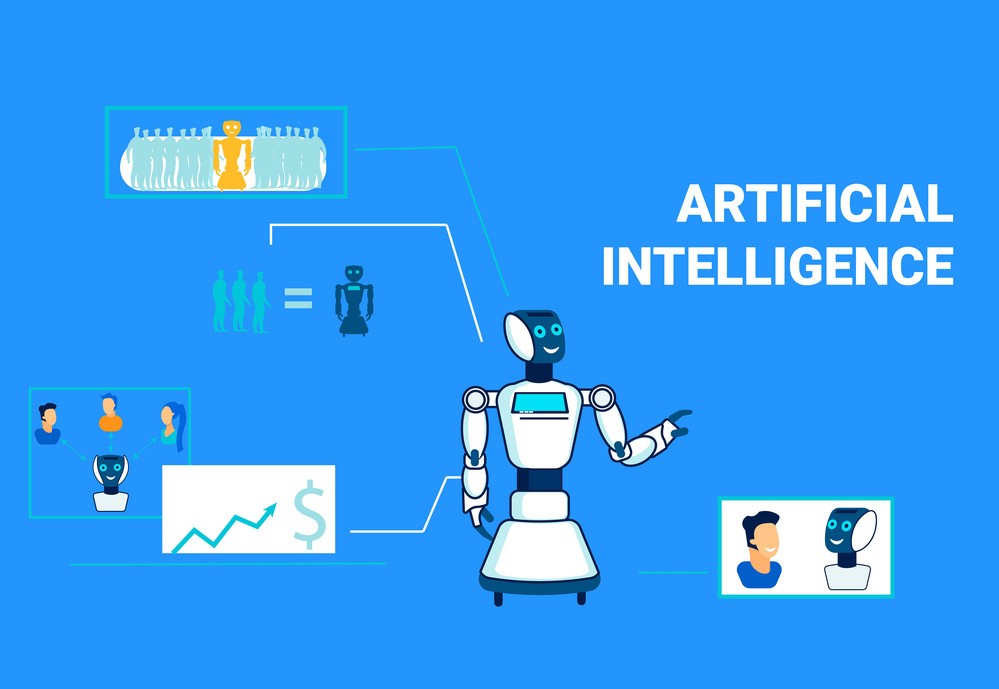In today's rapidly evolving digital landscape, businesses are constantly seeking ways to stay ahead of the competition and unlock new avenues for growth. Among the groundbreaking technologies that have revolutionized the business landscape, Artificial Intelligence (AI) and Machine Learning (ML) stand out as game-changers. These technologies offer unprecedented opportunities for businesses to streamline processes, enhance decision-making, and drive innovation. However, as with any transformative technology, AI and ML also come with their own unique set of challenges.
In this blog post, we will delve into the exciting benefits and complex challenges associated with AI and ML adoption for businesses.

Opportunities
Here are some of the Opportunities of Artificial Intelligence (AI) and Machine Learning (ML) for businesses:
- Process Automation and Efficiency: AI and ML technologies enable businesses to automate repetitive and manual tasks, improving operational efficiency and reducing costs. By automating processes, businesses can save time and resources, allowing employees to focus on higher-value activities.
- Advanced Data Analytics: AI and ML algorithms can analyze large volumes of data quickly and accurately. This enables businesses to gain valuable insights, detect patterns, and make data-driven decisions. By leveraging these insights, organizations can optimize operations, identify market trends, and enhance overall business performance.
- Personalized Customer Experiences: AI and ML can help businesses create personalized experiences for customers. By analyzing customer data and behavior, businesses can tailor products, services, and marketing campaigns to individual preferences. This level of personalization enhances customer satisfaction, increases engagement, and fosters long-term loyalty.
- Improved Decision-Making: AI and ML algorithms can process complex information, identify correlations, and generate accurate predictions. This enables businesses to make informed decisions, anticipate market changes, and identify potential risks and opportunities. Enhanced decision-making leads to more effective strategies and better outcomes.
- Enhanced Customer Service: AI-powered chatbots and virtual assistants can provide 24/7 customer support, answering queries and addressing customer needs in real-time. This improves response times, enhances customer satisfaction, and frees up human agents to handle more complex issues.
- Predictive Maintenance: AI and ML can analyze data from sensors and machines to detect patterns and anomalies. By predicting maintenance needs, businesses can proactively address issues before they cause major disruptions. This reduces downtime, improves productivity, and extends the lifespan of equipment.
- Risk Management and Fraud Detection: AI and ML algorithms can analyze large datasets and identify patterns indicative of fraud or anomalies. This helps businesses detect fraudulent activities, mitigate risks, and enhance security measures. By proactively identifying potential threats, organizations can safeguard their assets and protect against financial losses.
- Product and Service Innovation: AI and ML can assist businesses in identifying market gaps, understanding customer preferences, and predicting demand. This enables organizations to develop innovative products and services that align with customer needs and stay ahead of competitors.

Challenges
Here are some of the key challenges of of Artificial Intelligence (AI) and Machine Learning (ML) for businesses:
- Data Quality and Quantity: AI and ML algorithms require large quantities of high-quality data for training and accurate predictions. Ensuring data accuracy, relevance, and consistency can be challenging, especially when dealing with diverse data sources or limited datasets.
- Ethical Considerations and Bias: AI and ML algorithms can inadvertently perpetuate biases present in training data, leading to discriminatory outcomes. It is crucial for businesses to ensure fairness, transparency, and ethical considerations throughout the development and deployment of AI systems.
- Skills Gap and Workforce Adaptation: Implementing AI and ML technologies often requires specialized skills in data science, machine learning, and programming. Organizations may face challenges in recruiting and retaining talent with the necessary expertise. Additionally, businesses need to provide training and upskilling opportunities to existing employees to adapt to the changing technological landscape.
- Integration with Existing Systems: Integrating AI and ML technologies with existing infrastructure and systems can be complex and require careful planning. Compatibility issues, data integration, and system scalability are challenges that businesses may encounter during implementation.
- Data Privacy and Security: As AI and ML rely on vast amounts of data, businesses must address concerns around data privacy, protection, and compliance with regulations such as GDPR. Ensuring proper data governance and implementing robust security measures are essential to maintaining trust and safeguarding sensitive information.
- Explainability and Trust: One significant challenge associated with AI algorithms is their inherent complexity, often operating as "black boxes" where it becomes challenging to understand the underlying mechanisms and rationale behind specific decisions or predictions. This lack of transparency can lead to concerns related to bias, fairness, and ethical implications. To build trust with stakeholders, businesses must prioritize the explainability of AI models.
By understanding and effectively addressing these challenges, businesses can fully harness the opportunities presented by AI and ML, driving innovation, efficiency, and growth in the dynamic digital landscape.Artificial Intelligence and Machine Learning offer businesses unprecedented opportunities to drive innovation, improve efficiency, and deliver exceptional customer experiences. However, to fully capitalize on these opportunities, businesses must overcome the challenges related to data quality, skill gaps, ethical considerations, and building trust. By addressing these challenges head-on, organizations can harness the transformative power of AI and ML to gain a competitive advantage and achieve long-term success in their respective industries.
In conclusion, As AI and ML continue to advance, businesses that proactively adapt to these technologies and navigate the associated challenges will be best positioned to thrive in the ever-evolving digital landscape. By embracing the opportunities while responsibly addressing the challenges, businesses can unlock the full potential of AI and ML to drive growth and success in their respective industries.
